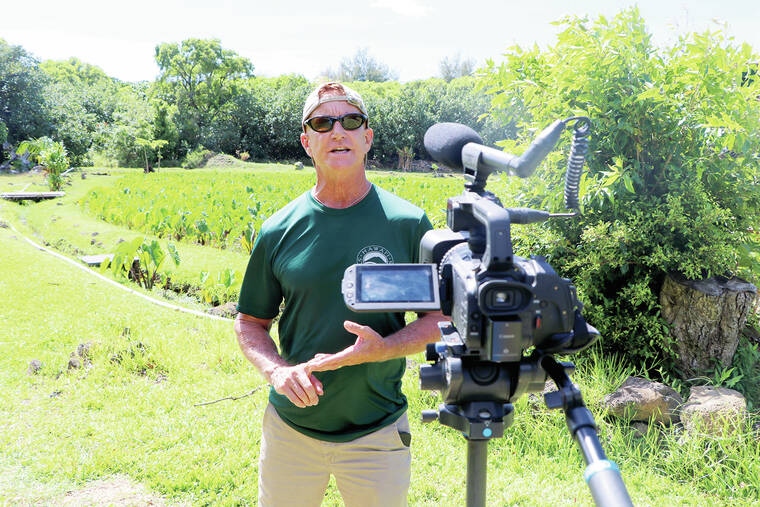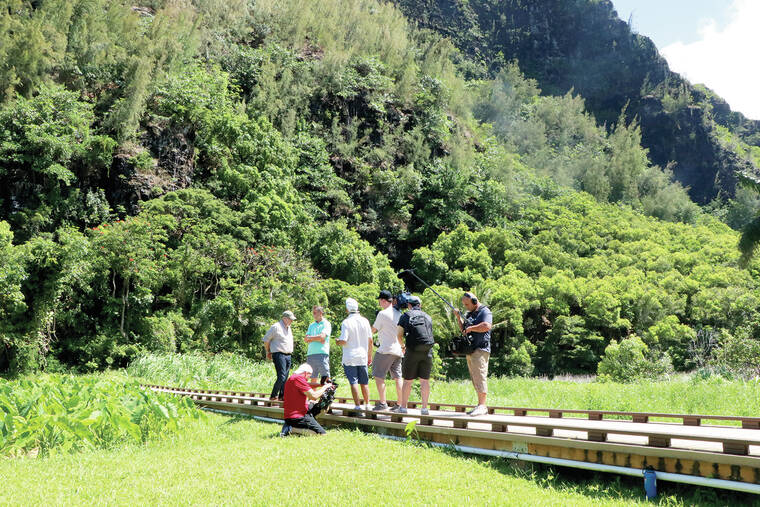LIHU‘E — Kaua‘i was the focus of an episode of “The Travel Detective: Hidden Gems,” which has begun airing on PBS stations nationwide
Last summer, national television travel host Peter Greenberg spent several days on Kaua‘i producing the episode, which discusses the concept of regenerative tourism.
State Department of Land and Natural Resources Division of State Parks Administrator Curt Cottrell met with Greenberg and his production team at Ha‘ena State Park, and explained how DSP and community partners re-imagined visitation to this popular park, which is also the gateway to the adjacent Napali Coast State Wilderness Park.
“Public-land managers are looking at solutions to curbing what has been called over-tourism. We are grateful for and need the national media to help tell the global visitor industry there’s a new normal,” Cottrell said.
The Kaua‘i Visitors Bureau sponsored several FAM (media familiarization) trips for nationally recognized travel journalists in 2021 and again this year. In addition to the PBS coverage, writers for USA Today, Parade and Travel + Leisure have produced or are preparing stories on the adaptive management at Ha‘ena. Reservations for parking, shuttles and entrance has reduced numbers there and on the Kalalau Trail from as high as 3,000 people each day to 900. Hawai‘i residents continue to have free access to all the parks without the need for reservations.
Ha‘ena State Park is one of three parks, along with Diamond Head State Monument and Wai‘anapanapa State Park, that require reservations for out-of-state visitors.
Recently, the state Board of Land and Natural Resources approved a second, one-year-long revocable permit for Hui Maka‘ainana o Makana to manage visitors and lo’i kalo at the park.
“We created the hui back in 1999 to really create a mechanism for us to be able to take care of this sacred landscape,” said Chipper Wichman, one of the original founders of Hui Maka‘ainana o Makana. “We had a vision to empower the community to help take care of this area, as it was crying out for care. We wanted to restore the integrity of the land and build a relationship with the DLNR so our community view would be recognized and we’d be allowed to co-manage the area with the Division of State Parks. That is one component of regenerative tourism.”
It’s one Greenberg says can be modeled worldwide at other natural, scenic and cultural sites that have or are experiencing over-visitation.
“The problem we have on a global scale is entitlement,” said Greenberg. “People think they’re entitled to visit a place and do whatever they want. They’re entitled to be responsible. And once that happens, then they can be entitled to have a great experience. Community management has come into play, not necessarily as a matter of regulating, but as a matter of educating. Once you do that, the regulation takes care of itself.”





